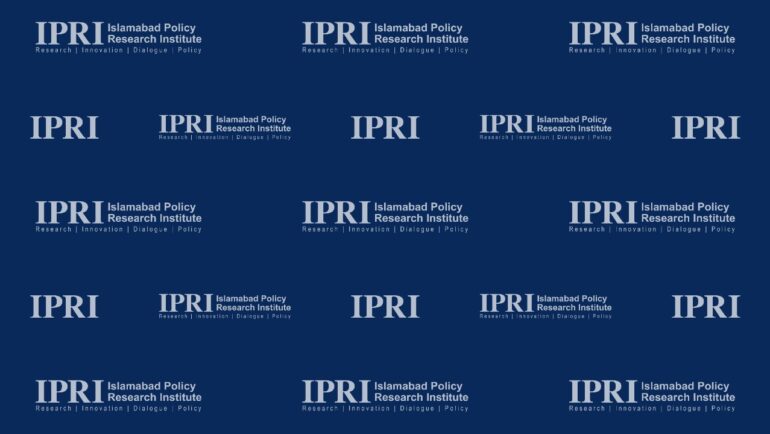Newspaper Article 29/08/2025
Chinese Foreign Minister Wang Yi’s recently concluded visits to Kabul and Islamabad have placed regional connectivity as a top priority. During the Pakistan-Afghanistan-China Foreign Ministers’ Trilateral Meeting in Kabul, the three countries called for cooperation against terrorism. Pakistan’s Deputy Prime Minister and Foreign Minister, Senator Ishaq Dar, voiced concern over the surge in terrorist attacks inside Pakistan. Afghan Foreign Minister Amir Khan Muttaqi “reaffirmed Kabul’s commitment to ensuring Afghan soil is not used against Pakistan or any other country.” While in Islamabad to attend the 6th Round of the Pakistan-China Strategic Dialogue, Foreign Minister Wang Yi met with Chief of Army Staff Field Marshal Syed Asim Munir. The meeting discussed counter-terrorism coordination, with particular focus on the Tehreek-e-Taliban Pakistan (TTP) and the Balochistan Liberation Army (BLA).
The TTP, BLA, its Majeed Brigade, and the East Turkestan Islamic Movement (ETIM) are operational in South Asia and Afghanistan. These terrorist groups pose a serious challenge to regional peace and economic integration. The cooperative regional approach to counter-terrorism is a positive development and will undoubtedly prove useful in dismantling terrorist networks across the region. Recently, the BLA and its Majeed Brigade were declared Foreign Terrorist Organisations (FTOs) by the United States. This is a positive step, reflecting international recognition of the destruction the BLA continues to cause to humanity. China’s Deputy Envoy to the United Nations, Geng Shuang, has also called for a united global front against terrorism.
Regional connectivity and economic integration are essential for South Asia’s progress. The region’s inability to develop collectively stems largely from territorial disputes and extremist tendencies. India, being the largest country in South Asia, has never prioritised regional economic cooperation. It has neither supported the progress of the South Asian Association for Regional Cooperation (SAARC) nor encouraged South Asia’s economic linkage with neighbouring regions. India’s opposition to the China-Pakistan Economic Corridor (CPEC) reinforces this claim. The corridor aims to connect South, East, and Central Asia, creating opportunities for energy cooperation and trade linkages with surrounding regions.
US Pressures India To Confront China As Trade Tensions And Alliances Shift
Although Chinese companies secured the rights to develop the Aynak mine years ago, progress has been delayed due to security concerns
Given South Asia’s political landscape, regional countries (other than India) are welcoming greater connectivity. They have stepped up economic engagement with China, whose growing role in South Asia is seen as a stabilising factor. Indeed, the vacuum left by the absence of regional economic integration has been filled by China. Countries in the region view economic connectivity as a means of collective growth and as a gateway to expanding their presence in international markets.
In the context of Afghanistan, a country devastated by decades of war, regional connectivity assumes particular importance. Afghanistan serves as a bridge to Central Asia, and the decision to include it in CPEC is a positive step. Lessons from past coercive practices in Afghanistan underscore the reality that lasting stability requires economic development. Afghanistan’s inclusion in CPEC is expected to be beneficial. In the words of Afghan Deputy Minister of Economy Abdul Latif Nazari: “Afghanistan’s participation in CPEC could play a significant role in job creation, reducing unemployment, strengthening infrastructure, attracting investment, and boosting regional cooperation.” Participation in such connectivity projects will allow Afghanistan to expand its economic engagements across the region. Importantly, this tilt towards Afghanistan by regional actors will be development-led.
Afghanistan is rich in lithium, iron, and copper deposits, which are a major attraction for foreign investment. Foreign Minister Wang Yi has noted that “China intends to advance mineral exploration with plans to initiate mining projects in Afghanistan this year.” The Aynak copper mine in Afghanistan holds an estimated 11 million tonnes of copper. Although Chinese companies secured the rights to develop the Aynak mine years ago, progress has been delayed due to security concerns. Chinese investment in Afghanistan’s mining sector aligns with the needs of its technology-driven industries.
Note: This article appeared in The Friday Times.
Disclaimer: The views expressed in the article are of the author and do not necessarily represent Institute’s policy.


